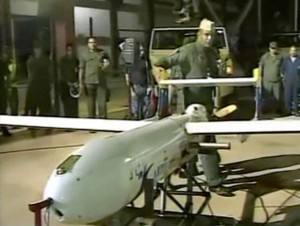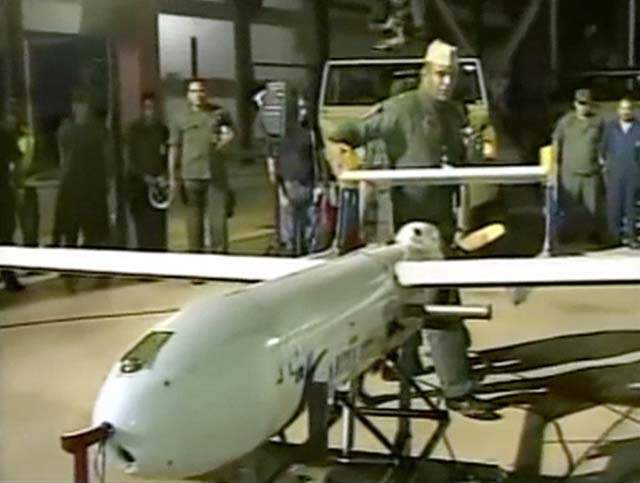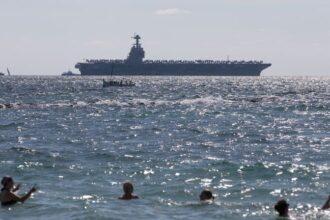
A drone believed to belong to the Iran-backed Islamist militant group Hezbullah has crash landed in Eastern Lebanon on Saturday, raising alarms over the growing strength of Iran’ asymmetrical army.
The small unmanned aerial device was witnessed bursting into flames and then crashing into the ground, according to the Lebanese newspaper The Daily Star. “Members of the resistance,” the newspaper said, then cordoned off the area and moved the device to an unknown location.
Last year, relations between Iran and the West came to a head when Iran captured an American “Sentinel” spy drone and paraded it on television, much to the anger of the Americans. At the time, the US administration expressed concerns not only about Iran acquiring intelligence from the device but also reverse engineering new unmanned drones from their find.
Then last Tuesday, the senior Commander of the Islamic Revolution Guards Corps’s Aerospace Division Brigadier General Amir-Ali Hajizadeh told Iranian press “The American RQ-170 drone will be undoubtedly duplicated.”
This may have already happened. A video raised alarms last month that featured Venezuelan President Hugo Chavez showing off newly-acquired made in Iran “Mohajer 2” drones. Mohajer, means pioneer, or traveller in Farsi, but would operate in Venezuela under the name “Santarpia.”
The skies are not the only place observers on Iran have been looking for signs of their military strength. Iran is producing greater numbers of mini-submarines that have been deployed in the Caspian Sea and the Strait of Hormuz, and the US has already claimed to have had difficulty in tracking them.
According to the Washington-based Institute of War Studies, Iran currently has 19 “mini-submarines” and is producing more.
The mini-submarines are also another case of Iran military technology relationships in South America. Venezuela has complained repeatedly to its neighbour Colombia about allowing US military onto its navy bases on the Pacific Ocean to support monitoring of “semi-subs” operating along narco-trafficking routes stretching from Colombia to Mexico and as far across the ocean as the Galapagos Islands.
The United States currently maintains almost 2,000 US Army and security contractors on the Colombian bases on the Pacific. The contractors are attempting to support the Colombian Navy in monitoring the “semi-submersibles,” which largely are used to transport cocaine from Colombian labs to Mexican distribution cartels.
As early as 2009, rumours circulated that the easy to assemble design of the “semi-subs” was coming from the Middle East and that the reason the Americans were so eager to get their hands on them was not because of the “War on Drugs,” but because of the “War on Terror.”
Captain Mario Rodríguez, Commander of the Colombian Coast Guard on the Pacific Ocean, said the evolution of narcotics transport capabilities evolved so quickly it seemed clear there was “outside support” and the navy was watching the semi-submersibles evolve to fully submersible before they could catch up.
The US is interested in the submersible because of its possible link to terror networks looking to circumvent new air travel security measures. Small subs leave a weaker heat and wake signature and are difficult to locate by radar and visual tracking.
The possible relationship of Iran to the narcotics chains was highlighted by a foiled alleged assassination attempt last year of a Saudi Ambassador in Washington DC, which allegedly revealed Iran was, according to the rumours at the time, working with a Mexican cartel to kill the ambassador of Saudi Arabia to the United States.
Navy Cmdr. Christopher Harmer, former director of Future Operations for the US Navy Fifth Fleet, and current senior naval analyst at the Institute for the Study of War, told the Christian Science Monitor that Iran is producing mini-subs at a rate of four per year.



